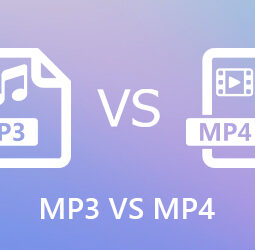Classical, jazz, folk or techno music: each music influences our psyche and our behavior. By broadcasting a particular melody in a doctor’s office, in a school canteen or in a sports hall, psychologists modulate our reactions.
Table of Contents
Mendelssohn: the melody of altruism
Does certain music make you generous? Other egoists? Psychologists Rona Fried and Leonard Berkowitz of New York University had students listen to three types of music: calm music, uplifting music, and music deemed “unpleasant”. The calm music was Songs without Words, Opus 19 No. 1 in E minor and Opus 38 No. 4 in A major by Felix Mendelssohn; the uplifting music was a tune by Duke Ellington (One o’clock jump) and the music perceived as unpleasant was Meditations by John Coltrane.
After the audition, each student could go home, but just as he was about to do so, the experimenter announced to him that she had a favor to ask him: it was to help him achieve a work commissioned by a university professor; she claimed to have very little time, and was asking for help to get out of this mess.
In the absence of music, 60 percent of the students agreed to help. After listening to Mendelssohn, that figure rose to 90 percent, with stimulating music producing no noticeable improvement, and obnoxious music causing a 15 percent drop in goodwill. We also know that a positive mood activated by external stimuli promotes assistance to others, while a negative mood has opposite effects. The music intervening on the mood, the figures would be explained by this priming of the mood.
Another explanation: the ability of music to strengthen social relationships. Psychologist Maria Regina and her colleagues at the Institute of Psychology in Saõ Paulo in Brazil revealed that when children listen to typical songs from different countries (Little papa Christmas, Sweet night, etc.), they talk to each other more and play more. together. Other studies have found that music played during a blood donation promotes subsequent donations, especially in people who are only occasional or first-time donors.
Soft music: painkiller
Some music seems to reduce the perception of pain, for example at the dentist or during benign, but sometimes unpleasant medical interventions. For example, Y. Chan, of Queen Mary’s Hospital in Hong Kong, studied patients undergoing colonoscopy (a probe is inserted into the digestive tract). He performed this test with or without music, then asked patients to complete questionnaires designed to assess the pain they felt. Slow-paced love songs were played to those exposed to music. Y. Chan has shown that music reduces the intensity of the pain felt, as well as the state of anxiety. He found that subjective pain scores were markedly reduced in the presence of music.
These observations confirm measurements made on the involuntary muscle movements or contractions that accompany the painful sensation. Measurements like this reveal that teenage girls undergoing a pelvic exam experience less muscle tension (stiffening of the muscles in the arms and legs) or pain behaviors (grimaces) when the exam takes place in a soothing musical environment.

Classical music: anti-violence
How to minimize the turbulent behavior of students in a college canteen? An unprecedented experiment was carried out by psychologist Lynne Chalmers and her colleagues at the University of North Dakota: they played classical music in the dining hall and observed very convincing results.
This experiment was conducted with 1,000 children attending school between CE 2 and CM2. Over a period of three months, the team carried out measurements of the noise level in the dining hall and the behavior of the children, depending on whether classical music or pop music was played during the meal. The results thus revealed that, compared to the absence of music, there is a drop of six decibels in the dining hall (i.e. seven percent of the usual sound volume) when playing classical music, and ten decibels (12 percent of usual volume) when it comes to pop music. As soon as you stop playing the music, the sound volume immediately increases. With regard to children’s behavior, service staff measured a dramatic 55 percent drop in aggressive behavior (hitting, throwing objects),insults or rudeness, poor behavior and non-storage of belongings when leaving. This decrease in aggressive or turbulent behavior is particularly observed with classical music. In addition, the team identified the number of impacts of food on the walls in the presence or absence of classical music: a notable drop in the number of impacts was observed in classical music situations.impacts have been observed in classical music situation.impacts have been observed in classical music situation.
Cartoon music: arithmetic
Music can improve your arithmetic performance! For example, Susan Hallam and her colleagues at the Institute of Education in London offered arithmetic problems to 10 or 11 year old children, either in a musical environment (Walt Disney type music) or in l absence of music. The task lasted 15 minutes, and measurements made by the London team showed that children immersed in the musical environment performed on average 36 problems compared to 27.3 when they had to work in silence. When will Tom & Jerry’s music be in college class during exams?
These results support other studies that establish a link between cognitive performance and music. Music has been shown to have calming effects on hyperactive children and increase their performance in mathematics, with other studies having found positive effects of Mozart’s music on the concentration of children with difficulties.
Techno: physical performance
At a time when sports scandals on doping products are almost daily, a new stimulating product could emerge. Painless, undetectable, inexpensive and safe: music.
Nancy Becker and her colleagues at Ursinus College in Pennsylvania have shifted exercise to children ages 9 to 11, adults ages 18 to 55, and seniors ages 60 to 80. Participants had to ride an exercise bike for two minutes, and cover the longest distance during that time. Some pedaled against a background of techno music, others against a background of soft music, others finally in silence. Techno music turns out to be particularly “doping”: while in the absence of music, the subjects covered an average of 1.2 kilometers, they reached 1.57 kilometers with soft music, and 1.62 kilometers with soft music. techno music, this effect having been observed for both children and adults, even the oldest.
A second experiment revealed that playing music before exercise, but stopping it just before exercise, also improved athletic performance. For researchers, the rhythm of music prepares the body for effort and resistance, which military bands have known since the dawn of time …
Music and Alzheimer’s disease
In some cases, music can be used for therapeutic purposes. Melissa Brotons and Susan Koger of the University of Oregon have measured the impact of certain music on the cognitive faculties of people with Alzheimer’s disease. The musics were chosen for their ability to stimulate oral expression in these people: they were known tunes, among the classics of American popular music, at the same time …










